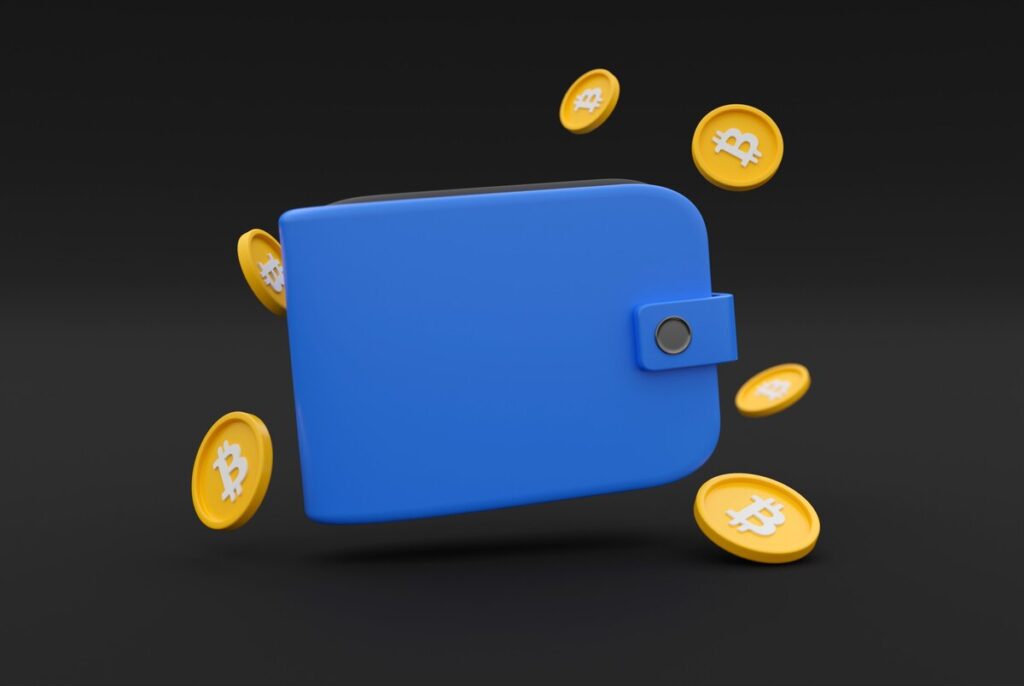From knowing what cryptocurrency is about to knowing the technology that powers it, this guide explores all you need to know before buying your first digital asset, including the best types of wallet and best practices to secure your wallet
Key takeaways:
- You must weigh the benefits and the downside of crypto investment and ask yourself: Is it worth it?
- Cold wallets are better than hot wallets for storing your digital assets because you’ll be able to mitigate hacks when stored offline.
- Choosing a crypto exchange, creating an account, funds deposit, and transfer to your wallet are the ways to purchase your first crypto.

What Is Cryptocurrency?
When you hear the term ‘cryptocurrency,’ think of it as digital money. But unlike the digital money in your bank account, no central authority controls cryptocurrencies.
In the world of cryptocurrencies, Bitcoin is often the first name that comes to mind. But, there are more than nine thousand of other cryptos around today. They are being listed on platforms such coinmarketcap.
Other cryptocurrencies are often referred to as ‘altcoins’ or alternative cryptocurrencies, each with their unique features and potential for growth.
Blockchain: The Power Behind Cryptocurrency
Cryptocurrencies rely heavily on a technology called ‘blockchain’. Don’t be intimidated by the jargon.
Blockchain is essentially a chain of blocks, where each block holds a list of transactions.
When a transaction occurs, it’s added to the “block.” Once the block is full, it’s sealed off and added to the chain. Hence, we have the term “blockchain.”
It maintains a list of records, called ‘blocks’, that are linked and secured using cryptography.
Each cryptocurrency operates on its own underlying technology and offers different features. Bitcoin, for instance, uses its blockchain to enable secure, peer-to-peer transactions to take place across the internet.
The ingenious part of blockchain technology is its security and transparency. No single person or organization controls the blockchain.
Instead, it’s maintained by multiple ‘nodes’ or computers that validate and record transactions. This decentralization makes it nearly impossible for anyone to alter past transactions.
Blockchain makes cryptocurrency transparent, making it possible for anyone to view the transactions on a blockchain.
However, the identity of the person making the transaction remains concealed, preserved by complex algorithms. This perfect blend of transparency and anonymity makes blockchain an ideal foundation for cryptocurrencies.
The Pros of Cryptocurrency Investment
When considering an investment in cryptocurrencies, it’s crucial to understand the potential benefits and risks involved. So, it is important to know the Pros and Cons of investing in digital assets.
The Benefits
High Potential Returns
The biggest allure of investing in cryptocurrencies is the possibility of high returns. Many early investors have made substantial profits, especially those who bought Bitcoin when it was still relatively new.
One of the earlier investors in Bitcoin is an anonymous person behind Pineapple Fund, who later disbursed 5,057 Bitcoin worth $86 million to 60 charities.
Accessibility and Control
With an internet connection and a digital wallet, anyone, anywhere can buy, sell, and hold cryptocurrencies.
Unlike traditional investment avenues, cryptocurrencies provide you with complete control over your investments, irrespective of location.
Diversification
Cryptocurrencies provide an alternative asset class that can help diversify your investment portfolio, potentially reducing risk.
For instance, apart from Bitcoin, other coins at your disposal include the upcoming digital assets that have potential such as Dogecoin, DAI, Litecoin, Shiba Inu, Stellar, Optimism among others.
The Downside of Cryptocurrency Investment
Volatility
Cryptocurrency prices can be highly volatile. Rapid and significant price swings can happen within very short periods, leading to potential losses.
For instance, Bitcoin rose from less than $1,000 in 2016 to a peak of almost $20,000 in December 2017.
It has also fallen from All-Time High $68,789.63, now trading below $28. That’s how volatile cryptocurrency can be.
Regulatory Risks
Given their relatively recent emergence, cryptocurrencies are still in a grey area of regulation in many countries.
Changes in laws or regulations can impact cryptocurrency value and usability. The government of countries such as Nigeria has been hostile to crypto trading, although there are new crypto regulations in the most-populated African country.
Lack of Consumer Protection
Unlike traditional bank accounts or credit cards, cryptocurrencies offer limited consumer protections.
If your digital assets are stolen, there’s usually no way to retrieve them, so it is advisable to keep your wallet secured.
Factors to Consider When Choosing the Right Cryptocurrency
To buy your first cryptocurrency, you might be overwhelmed by the many options available in the market. But there are factors that should guide your purchase, including the crypto exchange platform which we already covered in our article.
They include:
Understanding the Cryptocurrency
Before investing, take time to understand what the cryptocurrency is, its purpose, and the problem it aims to solve.
Some cryptocurrencies are designed as digital money (like Bitcoin), while others power blockchain platforms (like Ethereum), or serve specific industries (like Ripple for financial institutions).
Market Capitalization

Market capitalization refers to the total value of all coins in circulation. It’s calculated by multiplying the total supply of coins by the current price of an individual unit.
Check the MarketCap of the digital assets in Table 1 and Table 2
Table 1:
- Bitcoin: $539,525,989,619,
- Ethereum: $196,499,876,209
- BNB: $32,587,014,619
- XRP: $27,819,403,663
- SOL: $9,589,052,499
Table 2:
- MarioCoin: $2,095
- JeromeAndGary: $2,095
- Kimchichi: $4,537
- SecretGem: $2,085
- CAT Color: $3,199
Generally, a high market cap (table 1) indicates a more stable and less risky. A low marketcap indicated extremely risky investment.
Liquidity
Liquidity refers to how easily a cryptocurrency can be bought and sold without affecting the overall market price.
Higher liquidity tends to mean more stability. Many exchanges provide information on trading volumes, which can be a good indicator of liquidity.
Technology and Development Team
Consider the technology behind the cryptocurrency and the team responsible for its development.
Research the background of the team members and their track record in the tech industry. If the team has experienced members and the technology is sound, it’s a positive sign.
Community Support
A strong community can contribute to the success of a cryptocurrency. Check social media and online forums to gauge the level of community support.
After choosing a suitable cryptocurrency, the next step is setting up a cryptocurrency wallet, which we will cover in the next section.
Types of Cryptocurrency Wallets
Before you can buy your first cryptocurrency, you’ll need to set up a cryptocurrency wallet. A wallet is a digital tool where you can securely store, send, and receive cryptocurrencies.
Types of Cryptocurrency Wallets
There are two main types of wallets:
Hot Wallets: These are online wallets that run on internet-connected devices like computers, mobile phones, or tablets. While hot wallets are convenient and user-friendly, they are susceptible to online threats.
Cold Wallets: Also known as hardware wallets, these are physical devices that store cryptocurrencies offline. They provide a high level of security but can be a little more complicated to set up and use.
How to Set Up a Wallet
The steps to set up a wallet can vary depending on the type of wallet and the provider, but generally, the process includes the following:
Choose a Wallet Provider: Pick a provider that supports the cryptocurrency you wish to buy. Some popular providers include Coinbase, Trezor, and Ledger.
Create an Account: Visit the provider’s website or download their app, then create an account. You’ll typically need to provide an email address and create a strong password.
Set Up Security Measures: Enable two-factor authentication and any other security measures recommended by the provider.
Backup Your Wallet: Most wallets will provide a backup option. This usually involves writing down a series of words (known as a seed phrase) that can be used to recover your wallet if you lose access to it
Guide to Buy Your First Cryptocurrency
Now that you have set up a wallet, it’s time to buy your first cryptocurrency. Here’s a step-by-step guide to help you through the process.
Choose a Cryptocurrency Exchange: A cryptocurrency exchange is an online platform where you can buy, sell, and trade cryptocurrencies.
Some popular exchanges include Coinbase, Binance, and Kraken. Consider factors such as ease of use, fees, security features, and the cryptocurrencies offered when choosing an exchange.
Create an Account: Sign up for an account on the exchange of your choice. This usually involves providing some personal information and verifying your identity.
Deposit Funds: Once your account is set up, you will need to deposit funds. Most exchanges allow you to deposit funds in the form of traditional money (like USD, EUR, etc.) or other cryptocurrencies.
Buy Cryptocurrency: Navigate to the trading section of the exchange. Select the cryptocurrency you want to buy and enter the amount you wish to purchase. Double-check all the details before confirming the transaction.
Transfer to Your Wallet: After purchasing, it’s a good practice to transfer your cryptocurrency to your personal wallet rather than leaving it on the exchange. This provides better security for your digital assets
Best Practices To Manage Your Cryptocurrency
Once you’ve purchased your first cryptocurrency, it’s important to manage your investment effectively. Here are some best practices to help you do just that.
Keep Your Wallet Secure
The security of your wallet is of utmost importance. Remember to keep your private keys and seed phrases safe and private. Never share them with anyone, as they can be used to access your wallet and steal your funds.
Stay Informed
The world of cryptocurrency is constantly evolving. Stay informed about the latest news and updates regarding your chosen cryptocurrency and the market as a whole.
Follow credible news sources, join online forums, and participate in community discussions.
Diversify Your Portfolio
Don’t put all your eggs in one basket. Consider investing in a variety of cryptocurrencies to spread your risk.
Diversifying your portfolio can help protect your investment in the event of a downturn in a specific cryptocurrency.
Monitor Your Investments
Keep track of the performance of your investments. Use apps or tools that allow you to monitor the value of your cryptocurrencies in real-time. This can help you make informed decisions about when to buy or sell.
Be Prepared for Volatility
Cryptocurrency prices can be highly volatile. Be prepared for significant price swings and only invest money that you can afford to lose. Never invest based on emotion or pressure from others
Conclusion
Buying your first cryptocurrency isn’t as difficult as you thought. But the key thing is that you must understand the technology underpinning them, weigh the pros and cons of investment, and learn how to choose the right one for you.

